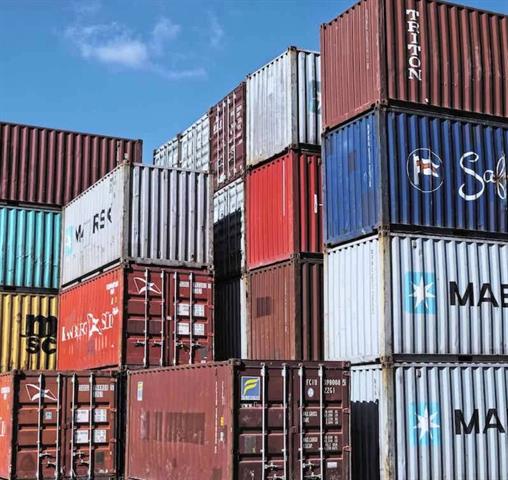 David L. Buss
David L. BussDavid Buss is CEO of DB Schenker USA, a 150-year-old leading global freight forwarder and 3PL provider.
Supply chains are facing stress and uncertainty in many aspects, including widespread labour shortages, limited resources and increased consumer demands. Technology is an ideal solution to bring suppliers and consumers together to make the supply chain process more efficient and streamlined.
Digital transformation is revolutionising many industries, including logistics. Supply Chain 4.0 for logistics is the application of technology to improve supply chain management using technologies like IoT, analytics and robotics.
Technology’s role in the supply chain
As the supply chain industry faces stress, pressure and disruptions, several key technologies can be used to help businesses serve the needs of customers and navigate this uncertainty.
The future of supply chains includes:
- Speed: Product distribution has a goal of delivering goods to customers efficiently, which can be achieved with forecasting and predictive analytics.
- Flexibility: Real-time forecasting and planning provides agility among rapidly shifting expectations and conditions.
- Efficiency: Supply chain efficiency can be achieved with automation, such as autonomous trucks and robotics.
- Accuracy: Effective supply chain management relies on real-time, end-to-end transparency throughout the process, from knowing the exact location of a delivery vehicle to the overall business processes.
- Personalisation: Consumers are asking for more personalisation, leading businesses to leverage mass customisation and microsegmentation instead of a one-size-fits-all approach.
 Supply chains are facing stress and uncertainty PHOTO: XCHANGE
Supply chains are facing stress and uncertainty PHOTO: XCHANGE
Important technologies in supply chain digitisation
1. Smart Technology
Smart technology is seeing increased adoption across industries, and logistics is no different. Smart devices for automation, robotics, cargo tracking, and remote fleet management provide key insights into shipments and vehicles in the transportation network.
Automation is another key factor in staying agile amid changing market conditions. Automation can tackle the repetitive, mundane tasks to leave employees free to focus on mission-critical tasks and projects. This also reduces mistakes that can cost valuable time and revenue.
RFID technology and cloud-enabled GPS are used to enhance tracking and remote fleet management with real-time data on the location of goods and vehicles in the warehouse or transportation network to keep the supply chain efficient and transparent.
Another example is business intelligence technology, which can be used to optimise the supply chain and adapt to different factors using data from IoT devices. The sensors collect and deliver real-time data insights to facilitate action on critical tasks, all without the need for human intervention.
2. Digital Thread
Digital thread is the use of digital tools for design, evaluation and lifecycle management. It acts as a closed loop between the digital and physical environment, sharing information between companies and consumers to keep the supply chain responsive in changing conditions.
People and workflows still need to be involved, however. Combined with digital thread, this creates an integrated value chain that offers collaboration between suppliers and customers to improve communication and transparency while reducing costs.
3. Demand-driven supply chain management
Supply chain flexibility is key to adapting to the rising challenges and expectations in logistics and transportation. Demand-driven supply chain management has been an important focus in logistics, but the enhancements in data collection and analytics offer greater agility to address challenges in real time.
Predictive analytics, IoT devices with sensors, and machine learning work together to collect, process, and analyse data in the environment and offer important insights for rapid-fire actions.
4. Consumer expectations
One of the biggest drivers in supply chain disruptions is the shifting consumer demands and expectations. Consumers are used to fast order processing and delivery, often for free, putting pressure on businesses to serve them efficiently. They don’t appreciate long processing times, delayed shipments, or delivery errors. With plenty of choice, small problems like these could drive them to a competitor. Centralised distribution and real-time inventory management systems offer a solution to ensure that companies can meet consumers where they want to be.
Consumers are also seeking customisation options and supply chain transparency. Companies are using rapid prototyping and additive manufacturing to restructure supply chains as needed and provide better and more customised services to customers.
5. Cyber threats
Cybersecurity and cyber threats are becoming a big problem for businesses in virtually every industry. The logistics industry is facing greater risk than most, thanks to the intrinsic security vulnerabilities that criminals can exploit. There are multiple parties involved in logistics, and any one of them having weaknesses can leave the entire network vulnerable to security threats. Every party needs to be on the same page with prioritising security access and protecting everyone’s assets collectively.
The only reliable option is end-to-end security measures that eliminate ingress points for hackers and shore up security across the network. All parties must share in the partnership to prioritise security and strict protocols that continuously monitor and assess risk across the entire ecosystem.
Preparing for the Future of Logistics with Technology
The logistics industry is facing disruptions in supply chains, but the possibilities with digitisation and key technologies like cloud-based GPS, data analytics, automation, and robotics can help businesses adapt to shifting consumer demands and ongoing challenges.